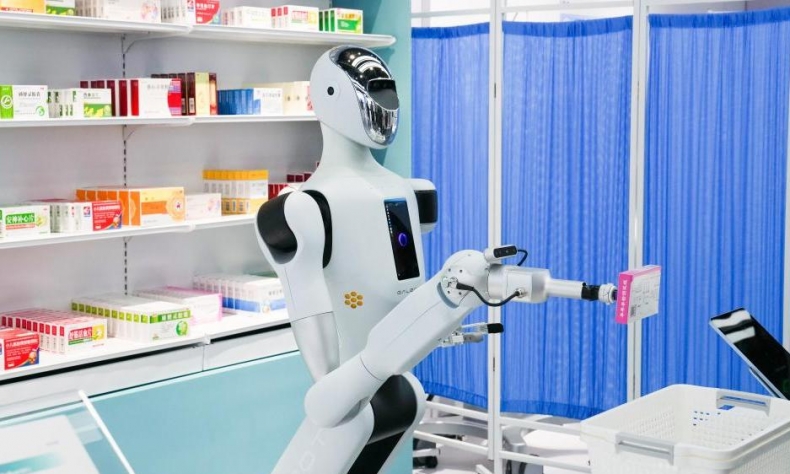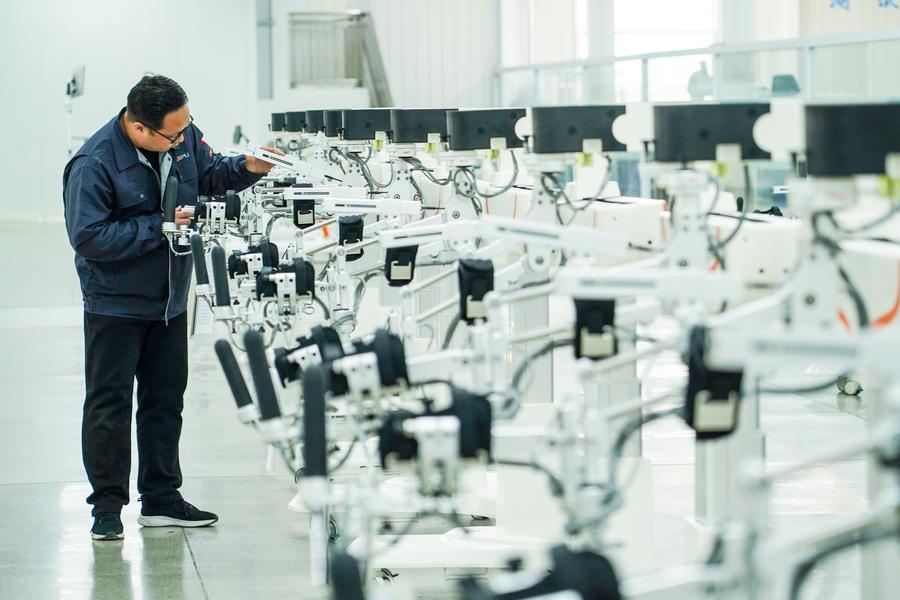Robots Ready to Serve Humans

Humanoid robots are set to go into mass production as industry works to overcome technological bottlenecks.
A group of 16 humanoid robots, developed by Chinese startup Unitree Robotics, wore folkloric jackets and performed the traditional yangge dance with fluid handkerchief movements and precise formations at CCTV’s popular Spring Festival Gala. While showcasing a fusion of cutting-edge technology and traditional culture, the performance also brought China’s humanoid development into the spotlight.
The show ignited widespread public debate over China’s advancements in humanoid robotics and signalled the industry’s move towards mass production. Many experts predict that mass production will commence in 2025.
But how far have humanoid robots truly advanced?
Production capacity
“Currently, humanoid robots are in their infancy, capable of only basic functions such as walking. Some robots are designed for specific operations, but they are also limited to simple hand tasks,” said Zhang Weimin, a professor at the Beijing Institute of Technology and chairman of Haribit, an intelligent technology firm based in Beijing.
China’s humanoid robots show strong growth potential, including the UBTECH Walker Robot, Xiaomi CyberOne, and Fourier’s GR-1. As of February 2024, over 24,700 enterprises and more than 1,000 state-level specialised companies are involved in the humanoid robot sector. According to forecasts by the Gaogong Robot Industry Research Institute, China’s humanoid robot market could see annual sales exceeding 1 million units by 2034.
Several domestic humanoid robots are already on the market, with leading companies like Agibot, Fourier, and Unitree launching small-scale production. The industry is preparing for mass production to begin in 2025.
However, the scale of application may initially be limited. Jiang Lei, chief scientist with the National-Local Co-built Humanoid Robot Innovation Centre, said that mass production does not necessarily mean that humanoid robots can also achieve large-scale application.
Liu Jinchang, a researcher at the High-Tech Research and Development Centre under the Ministry of Science and Technology, pointed out that although humanoid technology has developed to a certain stage, its application is limited by high costs and relatively low levels of intelligence.
“To achieve true large-scale production and commercialisation, issues related to technology, cost, and application scenarios must be addressed,” Zhang added.

From lab to factory
Several Chinese companies are accelerating trials of humanoid robots across various industries. The integration of humanoid robots into the manufacturing sector is widely viewed as an inevitable development.
On 17 January 2025, China’s Shenzhen-based Leju Robotics delivered its 100th full-size humanoid robot to Beijing-based carmaker BAIC Group, marking a significant step towards mass production.
Ding Han, an academician with the Chinese Academy of Sciences, believes that the industrial sector may be the first to see widespread deployment of humanoid robots.
“Reliability and stability are key for large-scale applications,” said Zhang. As humanoid robots are not yet fully mature in these aspects, they are better suited for scenarios with a high error margin.
Jiang noted that humanoid robots could offer significant value in high-risk industries such as safety, pollution control, and radiation management. These fields are likely to lead in adopting humanoid robotics on a larger scale.
Use in daily life
Amidst an aging population, humanoid robots could play a vital role in elderly care.
China plans to promote the adoption of intelligent home systems and develop services focused on early warning and prevention of safety risks for elderly individuals, according to guidelines released by the Communist Party of China Central Committee and the State Council on 30 December 2024. Humanoid robots, with their strengths in human-robot interaction, are advancing rapidly and hold great promise for health care and home service applications.
For example, the Xiangjiang-1, developed by enterprises in Changsha, Hunan Province, is claimed to be the world’s first humanoid robot specialising in health care and companionship, designed to offer medical assistance, mobility support, entertainment, meal assistance, and bathroom aid.
“Currently, robots are used primarily in elderly care for tasks like rehabilitation and assistance. However, humanoid robots must overcome several challenges before they can be integrated into homes,” Zhang said, citing issues such as battery safety, privacy protection, and reliability.
 Facebook
Facebook
 Twitter
Twitter
 Linkedin
Linkedin
 Google +
Google +










